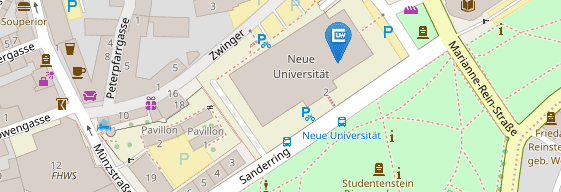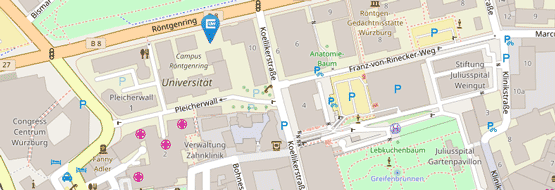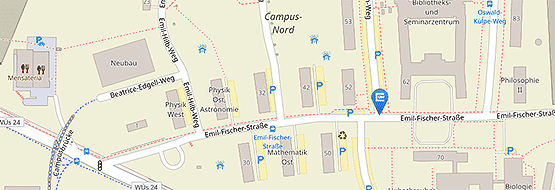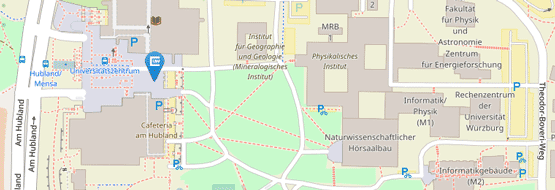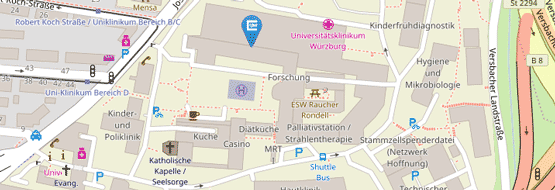Journal Articles
- [ 2025 ]
- [ 2024 ]
- [ 2023 ]
- [ 2022 ]
- [ 2021 ]
- [ 2020 ]
- [ 2019 ]
- [ 2018 ]
- [ 2017 ]
- [ 2016 ]
- [ 2015 ]
- [ 2014 ]
- [ 2013 ]
- [ 2012 ]
- [ 2011 ]
- [ 2010 ]
- [ 2009 ]
- [ 2008 ]
- [ 2007 ]
- [ 2006 ]
- [ 2004 ]
- [ 2001 ]
- [ 1997 ]
- [ 1995 ]
- [ 1994 ]
- [ 1993 ]
- [ 1992 ]
- [ 1990 ]
- [ 1988 ]
- [ 1986 ]
- [ 1985 ]
- [ 1982 ]
2025[ to top ]
-
Exploring the Application of Time Series Foundation Models to Network Monitoring Tasks. . In Computer Networks, Special Issue on Generative and Explainable AI for Internet Traffic and Network Architectures. 2025.
-
A Tutorial on Data-Driven Quality of Experience Modeling with Explainable Artificial Intelligence. . In IEEE Communications Surveys & Tutorials. 2025.
2024[ to top ]
-
COBIRAS: Offering a Continuous Bit Rate Slide to Maximize DASH Streaming Bandwidth Utilization. . In ACM Transactions on Multimedia Computing, Communications, and Applications. 2024.
-
The Missing Link in Network Intrusion Detection: Taking AI/ML Research Efforts to Users. . In IEEE Access. 2024.
-
Machine Learning with Computer Networks: Techniques, Datasets and Models. . In IEEE Access. 2024.
-
Marina: Realizing ML-Driven Real-Time Network Traffic Monitoring at Terabit Scale. . In Transactions on Network and Service Management (TNSM). 2024.
-
Plan the Access? Generic Hardware Independent Energy Consumption and Efficiency Model for Different LoRaWAN Channel Access Approaches. . In IEEE Internet of Things Journal. 2024.
-
Analysis of Energy Intensity and Generic Energy Efficiency Metrics in Communication Networks: Limits, Practical Applications, and Case Studies. . In IEEE Access, 12, pp. 105527–105549. 2024.
2023[ to top ]
-
Industrial User Experience Index vs. Quality of Experience Models. . In IEEE Communications Magazine, 61(1), pp. 98–104. 2023.
-
Do you Agree? Contrasting Google’s Core Web Vitals and the Impact of Cookie Consent Banners with Actual Web QoE. . In Quality and User Experience. 2023.
-
Efficient graph-based gateway placement for large-scale LoRaWAN deployments. . In Computer Communications, 204, pp. 11–23. 2023.
-
Share and Multiply: Modeling Communication and Generated Traffic in Private WhatsApp Groups. . In IEEE Access, 11, pp. 25401–25414. 2023.
-
On Profiling, Benchmarking and Behavioral Analysis of SDN Architecture Under DDoS Attacks. . In Journal of Network and Systems Management. 2023.
-
Want more WANs? Comparison of Traditional and GAN-based Generation of Wide Area Network Topologies via Graph and Performance Metrics. . In Transactions on Network and Service Management (TNSM). 2023.
2022[ to top ]
-
YouTube Dataset on Mobile Streaming for Internet Traffic Modeling and Streaming Analysis. . In Nature, Scientific Data. 2022.
-
An Introduction to Online Video Game QoS and QoE Influencing Factors. . In IEEE Communications Surveys & Tutorials. 2022.
-
Pandemic in the Digital Age: Analyzing WhatsApp Communication Behavior before, during, and after the COVID-19 Lockdown. . In Humanities and Social Sciences Communications, 9(1), pp. 140 (1–9). 2022.
-
Towards LoRaWAN without Data Loss: Studying the Performance of Different Channel Access Approaches. . In Sensors. 2022.
2021[ to top ]
-
Cumulative Quality Modeling for HTTP Adaptive Streaming. . In ACM Transactions on Multimedia Computing, Communications, and Applications, 17(1), pp. 22 (1–24). 2021.
-
Uplink vs. Downlink: Machine Learning-Based Quality Prediction for HTTP Adaptive Video Streaming. . In Sensors, 21(12), p. 4172. 2021.
-
Energy-Aware Service Function Chain Embedding in Edge-Cloud Environments for IoT Applications. . In IEEE Internet of Things Journal. 2021.
-
Improving Web QoE Monitoring for Encrypted Network Traffic through Time Series Modeling. . In ACM SIGMETRICS Performance Evaluation Review, 48(4), pp. 37–40. 2021.
-
Performance Evaluation of Hybrid Crowdsensing and Fixed Sensor Systems for Event Detection in Urban Environments. . In Sensors, 21(17), pp. 5880 (1–19). 2021.
-
LoRaPlan: A Software to Evaluate Gateway Placement in LoRaWAN. . In 17th International Conference on Network and Service Management. 2021.
-
Delivering User Experience over Networks: Towards a Quality of Experience Centered Design Cycle for Improved Design of Networked Applications. . In SN Computer Science, 2. 2021.
-
Valid Statements by the Crowd: Statistical Measures for Precision in Crowdsourced Mobile Measurements. . In Network, 1(2), pp. 215–232. 2021.
-
Discrete-Time Modeling of NFV Accelerators that Exploit Batched Processing. . In ACM Transactions on Modeling and Performance Evaluation of Computing Systems, 6(3), pp. 1–27. 2021.
2020[ to top ]
-
Deriving QoE in systems: from fundamental relationships to a QoE‑based Service‑level Quality Index. . In Springer Quality and User Experience, 5(7), p. https://rdcu.be/b483m. 2020.
-
Subjective perception of craniofacial growth asymmetries in patients with deformational plagiocephaly. . In Springer Clinical Oral Investigations, 24, pp. https://doi.org/10.1007/s00784–020. 2020.
-
IJNM Special Issue - Editorial - QoE-centric Analysis and Management of Communication Networks. . In International Journal of Network Management, Special Issue: QoE-centric Analysis and Management of Communication Networks. 2020.
-
In vitro vs in vivo: does the study’s interface design influence crowdsourced video QoE?. . In Quality and User Experience. 2020.
-
ViCrypt to the Rescue: Real-time, Machine-Learning-driven Video-QoE Monitoring for Encrypted Streaming Traffic. . In IEEE Transactions on Network and Service Management, 17(4), pp. 2007–2023. 2020.
-
Statistical Methods and Models based on Quality of Experience Distributions. . In Quality and User Experience, 6(1). 2020.
2019[ to top ]
-
The Power of Composition: Abstracting a Multi-Device SDN Data Path Through a Single API. . In IEEE Transactions on Network and Service Management. 2019.
-
Using Attention Testing to Select Crowdsourced Workers and Research Participants. . In Social Science Computer Review. 2019.
-
A Fair Share for All: TCP-inspired Adaptation Logic for QoE Fairness among Heterogeneous HTTP Adaptive Video Streaming Clients. . In IEEE Transactions on Network and Service Management, 16(2), pp. 475–488. 2019.
-
Modeling of Aggregated IoT Traffic and Its Application to an IoT Cloud. . In Proceedings of the IEEE, 107(4), pp. 679–694. 2019.
-
Dissecting the performance of YouTube video streaming in mobile networks. . In International Journal of Network Management. 2019.
-
Machine Learning Models for YouTube QoE and User Engagement Prediction in Smartphones. . In ACM SIGMETRICS Performance Evaluation Review, 46(3), pp. 155–158. 2019.
-
Survey of Performance Acceleration Techniques for Network Function Virtualization. . In Proceedings of the IEEE. 2019.
-
Considering User Behavior in the Quality of Experience Cycle: Towards Proactive QoE-aware Traffic Management. . In IEEE Communications Letters, 23(7), pp. 1145–1148. 2019.
2018[ to top ]
-
Quality of experience column: an introduction. . In ACM SIGMultimedia Records, (3), p. 10. 2018.
-
Active Learning for Crowdsourced QoE Modeling. . In IEEE Transactions on Multimedia. 2018.
-
Confidence Interval Estimators for MOS Values. . In arXiv preprint arXiv:1806.01126. 2018.
-
Guest Editorial: Special Issue on “QoE Management for Multimedia Services.”. . In ACM Transactions on Multimedia Computing, Communications, and Applications (TOMM). 2018.
-
Towards Machine Learning-Based Optimal HAS. . In arXiv preprint arXiv:1808.08065. 2018.
-
A new QoE fairness index for QoE management. . In Quality and User Experience. 2018.
-
Impact of VNF Placements on QoE Monitoring in the Cloud. . In International Journal of Network Management, (NEM-18-0120.R1). 2018.
-
A Generic Approach to Video Buffer Modeling using Discrete-Time Analysis. . In ACM Transactions on Multimedia Computing, Communications, and Applications (TOMM), 14(33), p. 23. 2018.
-
Vertrauen ist gut, Blockchain ist besser - Einsatzmöglichkeiten von Blockchain für Vertrauensprobleme im Crowdsourcing. . In HMD Praxis der Wirtschaftsinformatik. 2018.
-
A Survey of Emerging Concepts and Challenges for QoE Management of Multimedia Services. . In ACM Transactions on Multimedia Computing, Communications and Applications. 2018.
2017[ to top ]
-
Design and Performance Evaluation of Network-assisted Control Strategies for HTTP Adaptive Streaming. . In ACM Transactions on Multimedia Computing, Communications, and Applications. 2017.
-
2016 International Teletraffic Congress (ITC 28) Report. . In ACM SIGCOMM Computer Communication Review. 2017.
-
A Discrete-Time Model for Optimizing the Processing Time of Virtualized Network Functions. . In Computer Networks, 125, pp. 4–14. 2017.
-
SDN and NFV as Enabler for the Distributed Network Cloud. . In Mobile Networks and Applications. 2017.
-
Quantitative Comparison of Application-Network Interaction: A Case Study of Adaptive Video Streaming. . In Springer Quality and User Experience. 2017.
-
An SDN/NFV-enabled Enterprise Network Architecture Offering Fine-Grained Security Policy Enforcement. . In IEEE Communications Magazine, 55(3), pp. 217–223. 2017.
-
Analytical Model for SDN Signaling Traffic and Flow Table Occupancy and its Application for Various Types of Traffic. . In IEEE Transactions on Network and Service Management, 14(3), pp. 603–615. 2017.
-
Softwarization and Caching in NGN. . In Computer Networks, 125, pp. 1–3. 2017.
2016[ to top ]
-
Leistungsbewertung von Ressourcenmanagementstrategien für zelluläre und drahtlose Mesh-Netzwerke. . In Lecture Notes in Informatics (LNI), Ausgezeichnete Informatikdissertationen 2015. 2016.
-
Formal definition of QoE metrics. . In arXiv preprint arXiv:1607.00321. 2016.
-
QoE beyond the MOS: an in-depth look at QoE via better metrics and their relation to MOS. . In Quality and User Experience, 1(2). 2016.
-
Definition of QoE Fairness in Shared Systems. . In IEEE Communications Letters. 2016.
-
TCP video streaming and mobile networks: Not a love story, but better with context. . In Computer Networks, 109, pp. 246–256. 2016.
-
Modeling the YouTube Stack: from Packets to Quality of Experience. . In Computer Networks, 109(2), pp. 211–224. 2016.
-
More than Topology: Joint Topology and Attribute Sampling and Generation of Social Network Graphs. . In Computer Communications, 73(Part B), pp. 176–187. 2016.
-
A Simple WiFi Hotspot Model for Cities. . In IEEE Communications Letters, 20(2), pp. 384–387. 2016.
-
Next to You: Monitoring Quality of Experience in Cellular Networks from the End-devices. . In IEEE Transactions on Network and Service Management, 13(2), pp. 181–196. 2016.
-
Performance Evaluation of Backhaul Bandwidth Aggregation Using a Partial Sharing Scheme. . In Physical Communication, 19, pp. 135–144. 2016.
-
Perceptual Quality of HTTP Adaptive Streaming Strategies: Cross-Experimental Analysis of Multi-Laboratory and Crowdsourced Subjective Studies. . In IEEE Journal on Selected Areas in Communications, 34(8), pp. 2141–2153. 2016.
-
Assessment of Subjective Influence and Trust with an Online Social Network Game. . In Computers in Human Behavior, 64, pp. 233–246. 2016.
2015[ to top ]
-
Special issue on crowdsourcing. . In Computer Networks: The International Journal of Computer and Telecommunications Networking. 2015.
-
Crowdsourced Network Measurements: Benefits and Best Practices. . In Computer Networks Special Issue on Crowdsourcing. 2015.
-
Heuristic Approaches to the Controller Placement Problem in Large Scale SDN Networks. . In IEEE Transactions on Network and Service Management - Special Issue on Efficient Management of SDN and NFV-based Systems, 12(1), pp. 4–17. 2015.
-
QoE for Cloud Gaming. . In IEEE Communications Society E-Letter. 2015.
-
Network Functions Virtualization (NFV) und Software Defined Networking (SDN): Forschungsfragen und Anwendungsfälle. . In ITG Mitgliederbeiträge / VDE dialog (invited article), pp. 10–13. 2015.
-
A Survey on Quality of Experience of HTTP Adaptive Streaming. . In IEEE Communications Surveys & Tutorials, 17, pp. 469–492. 2015.
-
Identifying QoE Optimal Adaptation of HTTP Adaptive Streaming Based on Subjective Studies. . In Computer Networks, 81, pp. 320–332. 2015.
-
Modeling and Performance Analysis of Application-Aware Resource Management. . In International Journal of Network Management, 25, pp. 223–241. 2015.
2014[ to top ]
-
Future Internet Research and Experimentation: The G-Lab Approach. . In Computer Networks. 2014.
-
A new power profiling method and power scaling mechanism for energy-aware NetFPGA gigabit router. . In Computer Networks. 2014.
-
Exploratory Analysis of a GGSN’s PDP Context Signaling Load. . In Journal of Computer Networks and Communications. 2014.
-
Best Practices for QoE Crowdtesting: QoE Assessment with Crowdsourcing. . In Transactions on Multimedia, 16. 2014.
-
On Training the Crowd for Subjective Quality Studies. . In VQEG eLetter, 1. 2014.
-
On the computation of entropy production in stationary social networks. . In Social Network Analysis and Mining, 4. 2014.
-
Quality of Experience Assessment using Crowdsourcing. . In IEEE COMSOC MMTC R-Letter, 5. 2014.
-
Interfaces, Attributes, and Use Cases: A Compass for SDN. . In IEEE Communications Magazine, 52, pp. 210–217. 2014.
-
Requirement Driven Prospects for Realizing User-Centric Network Orchestration. . In Multimedia Tools and Applications. 2014.
-
Crowdsourcing Quality-of-Experience Assessments. . In IEEE Computer, 47, pp. 98–102. 2014.
-
Close to Optimum? User-centric Evaluation of Adaptation Logics for HTTP Adaptive Streaming. . In PIK - Praxis der Informationsverarbeitung und Kommunikation, 37, pp. 275–285. 2014.
2013[ to top ]
-
Aktuelles Schlagwort: Big Data. . In Informatik-Spektrum, 36, pp. 319–323. 2013.
-
Sensorium – A Generic Sensor Framework. . In PIK - Praxis der Informationsverarbeitung und Kommunikation, 36(1). 2013.
-
Comparison of IP-Based and Explicit Paths for One-to-One Fast Reroute in MPLS Networks. . In Telecommunication Systems (TS) Journal, 52, pp. 947–958. 2013.
-
OC²E²AN: Optimized Control Center for Experience Enhancements in Access Networks. . In PIK - Praxis der Informationsverarbeitung und Kommunikation, 36, p. 40. 2013.
-
Global Locator, Local Locator, and Identifier Split (GLI-Split). . In Future Internet, 5, pp. 67–94. 2013.
-
Using Buffered Playtime for QoE-Oriented Resource Management of YouTube Video Streaming. . In Transactions on Emerging Telecommunications Technologies, 24, pp. 288–302. 2013.
-
RCFT: A Termination Method for Simple PCN-Based Flow Control. . In Journal of Network and Systems Management. 2013.
-
Crowdsourcing and its Impact on Future Internet Usage. . In it - Information Technology, 55, pp. 139–145. 2013.
-
A Survey of Mapping Systems for Locator/Identifier Split Internet Routing. . In IEEE Communications Surveys & Tutorials, 14, pp. 1842–1858. 2013.
-
Modeling and Experimenting Combined Smart Sleep and Power Scaling Algorithms in Energy-aware Data Center Networks. . In Simulation Modelling Practice and Theory, 39. 2013.
-
YOUQMON: A System for On-line Monitoring of YouTube QoE in Operational 3G Networks. . In ACM SIGMETRICS Performance Evaluation Review, 41, pp. 44–46. 2013.
-
Software defined Networks - Das Internet flexibler gestalten und dynamischer steuern. . In ITG Mitgliederbeilage / VDE dialog (invited article), pp. 6–9. 2013.
-
Angry Apps: The Impact of Network Timer Selection on Power Consumption, Signalling Load, and Web QoE. . In Journal of Computer Networks and Communications, pp. 1–22. 2013.
-
Crowdsourcing - Modell einer neuen Arbeitswelt im Internet. . In Informatik Spektrum, Wirtschaftsinformatik & Management, 5. 2013.
2012[ to top ]
-
Cooperative Traffic Management for Video Streaming Overlays. . In Computer Networks, 56(3), pp. 1118–1130. 2012.
-
Caching for BitTorrent-like P2P Systems: A Simple Fluid Model and its Implications. . In IEEE/ACM Transactions on Networking, 20(4). 2012.
-
Analyzing Costs and Accuracy of Validation Mechanisms for Crowdsourcing Platforms. . In Mathematical and Computer Modelling. 2012.
-
The Network of Excellence Euro-NF and its Specific Joint Research Projects. . In ICST Global Community Magazine. 2012.
-
On the influence of network impairments on YouTube video streaming. . In Journal of Telecommunications and Information Technology. 2012.
-
Gaming in the clouds: QoE and the users’ perspective. . In Mathematical and Computer Modelling. 2012.
-
Energy Efficient Virtual Network Embedding. . In IEEE Communication Letters, PP. 2012.
-
Challenges of QoE Management for Cloud Applications. . In IEEE Communications Magazine, April issue. 2012.
-
Aktuelles Schlagwort: Crowdsourcing. . In Informatik Spektrum, 35. 2012.
-
Performance of PCN-Based Admission Control under Challenging Conditions. . In IEEE/ACM Transactions on Networking, 20(2), pp. 422–435. 2012.
-
Quality of Experience Management for YouTube: Clouds, FoG and the AquareYoum. . In PIK - Praxis der Informationverarbeitung und -kommunikation (PIK). 2012.
2011[ to top ]
-
Characterization of BitTorrent Swarms and their Distribution in the Internet. . In Computer Networks, 55(5), pp. 1197–1215. 2011.
-
AquareYoum: Application and Quality of Experience-Aware Resource Management for YouTube in Wireless Mesh Networks. . In PIK - Praxis der Informationsverarbeitung und Kommunikation. 2011.
-
Provisioning and Operation of Virtual Networks. . In Electronic Communications of the EASST, Kommunikation in Verteilten Systemen 2011, 37. 2011.
-
ALEVIN - A Framework to Develop, Compare, and Analyze Virtual Network Embedding Algorithms. . In Electronic Communications of the EASST, Kommunikation in Verteilten Systemen 2011, 37. 2011.
-
On Max-Min Fair Flow Optimization in Wireless Mesh Networks. . In Ad Hoc Networks, Special Issue on Models and Algorithms for Wireless Mesh Networks. 2011.
-
Performance Evaluation of Packet Re-ordering on Concurrent Multipath Transmissions for Transport Virtualization. . In JCNDS Special Issue on: Network Virtualization - Concepts and Performance Aspects, Vol. 6, pp. 322–340. 2011.
-
Compact node-link formulations for the optimal single path MPLS Fast Reroute layout. . In Advances in Electronics and Telecommunications, 2. 2011.
-
EuroView 2010: Visions of Future Generation Networks. . In Computer Communications Review CCR, Volume 41, Number 2. 2011.
-
PCN-Based Marked Flow Termination. . In Computer Communications, 34, pp. 2082–2093. 2011.
-
Mitigating Unfairness in Locality-Aware Peer-to-Peer Networks. . In International Journal of Network Management (IJNM), Special Issue on Economic Traffic Management, 21(1). 2011.
-
MuLaNEO: Planung und Optimierung von Mehrdienstnetzen. . In PIK - Praxis der Informationsverarbeitung und Kommunikation, 34, pp. 138–139. 2011.
-
ResiLyzer: Ein Werkzeug zur Analyse der Ausfallsicherheit in paketvermittelten Kommunikationsnetzen. . In PIK - Praxis der Informationsverarbeitung und Kommunikation, 34, pp. 158–159. 2011.
2010[ to top ]
-
QoE based Bandwidth Management Supporting Real Time Flows in IEEE 802.11 Mesh Networks. . In PIK - Praxis der Informationsverarbeitung und Kommunikation, 32. 2010.
-
Loop-Free Alternates and Not-Via Addresses: A Proper Combination for IP Fast Reroute?. . In Computer Networks, 54, pp. 1300–1315. 2010.
-
Towards Quality of Experience-based Reputation Models for Future Web Service Provisioning. . In Special Issue of the Springer Telecommunication Systems Journal: Future Internet Services and Architectures - Trends and Visions, print available in 2013, 51, pp. 283–295. 2010.
-
Efficiency of Routing and Resilience Mechanisms in Packet-Switched Communication Networks. . In European Transactions on Telecommunications, 21, pp. 108–120. 2010.
-
Traffic characterization of a residential wireless Internet access. . In Special Issue of the Telecommunication Systems (TS) Journal, 48: 1-2. 2010.
-
Interaction Patterns between P2P Content Distribution Systems and ISPs. . In to be published in IEEE Communications Magazine. 2010.
-
A Generic Quantitative Relationship between Quality of Experience and Quality of Service. . In IEEE Network Special Issue on Improving QoE for Network Services. 2010.
-
On Optimization of Wireless Mesh Networks using Genetic Algorithms. . In International Journal On Advances in Internet Technology, 1&2. 2010.
-
Impact of Electrical and Mechanical Antenna Downtilt on a WiMAX System with Fractional Frequency Reuse. . In FREQUENZ - Journal of RF-Engineering and Telecommunications, September/October. 2010.
-
PCN-Based Measured Rate Termination. . In Computer Networks, 54(13). 2010.
-
FIRMS: A Mapping System for Future Internet Routing. . In IEEE Journal on Selected Areas in Communications (JSAC), Special Issue on Internet Routing Scalability, 28, pp. 1326–1331. 2010.
-
A Survey of PCN-Based Admission Control and Flow Termination. . In IEEE Communications Surveys & Tutorials, 12(3). 2010.
2009[ to top ]
-
Threshold Configuration and Routing Optimization for PCN-Based Resilient Admission Control. . In Computer Networks, Volume 53, Issue 11. 2009.
-
Spatial and Temporal Fairness in Heterogeneous HSDPA-enabled UMTS Networks. . In Eurasip Journal on Wireless Communications and Networking (JWCN), to appear 2009. 2009.
-
Mastering Selfishness and Heterogeneity in Mobile P2P Content Distribution Networks with Multiple Source Download in Cellular Networks. . In Peer-to-Peer Networking and Applications, Special Issue on Mobile P2P Networking and Computing. 2009.
-
Capacity Analysis of Reservation-Based Random Access for Braodband Wireless Access Networks. . In IEEE Journal on Selected Areas in Communication (JSAC), 27. 2009.
-
Relaxed Multiple Routing Configurations: IP Fast Reroute for Single and Correlated Failures. . In IEEE Transactions on Network and Service Managment, 6, pp. 1–14. 2009.
-
Radio Resource Management for the UMTS Enhanced Uplink in Presence of QoS Radio Bearers. . In Special Issue of Annals of Operation Research on Stochastic Performance Models for Resource Allocati, 170. 2009.
-
Challenges in the Development of Mobile P2P Applications and Services. . In Vietname Journal on Information and Communication Technologies, E-1, Number 2 (6). 2009.
-
Emerging Issues in Current Future Internet Design. . In e&i Elektrotechnik und Informationstechnik, Special Issue ’Future Internet’, ISSN: 0932-383X (print), ISSN: 1613-7620 (online), 07/08. 2009.
-
BP-MAC: A High Reliable Backoff Preamble MAC Protocol for Wireless Sensor Networks. . In EJSE - Electronic Journal of Structural Engineering: Special Issue on Sensor Network for Building Monitoring: From Theory to Real Application. 2009.
-
Source Models for Speech Traffic Revisited. . In IEEE/ACM Transactions on Networking, 17(5). 2009.
-
Resilience Analysis for Packet-Switched Communication Networks. . In IEEE/ACM Transactions on Networking, 17. 2009.
2008[ to top ]
-
Admission Control for Speech Traffic in the Presence of Overbooking. . In Praxis der Informationsverarbeitung und Kommunikation (PIK), 30(4). 2008.
-
Trends in Network and Service Operation for the Emerging Future Internet. . In International Journal of Electronics and Communication. 2008.
-
Resilient Network Admission Control. . In Computer Networks, 52(14). 2008.
-
Analysis of Skype VoIP Traffic in UMTS: End-to-End QoS and QoE Measurements. . In Computer Networks, 52, pp. 650–666. 2008.
-
Efficient Simulation of Large-Scale P2P Networks. . In International Journal of Computational Science and Engineering (IJCSE): Special Issue on Parallel, Distributed and Network-Based Processing. 2008.
-
Future Internet Routing: Motivation and Design Issues. . In it - Information Technology, 50(6). 2008.
2007[ to top ]
-
P2P-based Network and Service Operation for the Emerging Future Internet. . In Praxis der Informationsverarbeitung und Kommunikation - Special Issue on Current Trends in Network a, II/2007. 2007.
-
Mechanismen zur Steuerung und Verwaltung von ATM-Netzen (Mechanisms for ATM network control and managment). . In Informatik Spektrum, 20, pp. 216–224. 2007.
-
Engine control using neural networks: A new method in engine management systems. . In MECCANICA, 32, pp. 423–430. 2007.
-
Dynamic Operation in Peer-to-Peer Overlay Networks. . In Praxis der Informationsverarbeitung und Kommunikation - Special Issues on Peer-to-Peer Systems. 2007.
-
Modeling of customer retrial phenomenon in cellular mobile networks. . In IEEE JSAC special issue on Personal Communication - Services, architecture and performance issues, pp. 1406–1414. 2007.
-
Spatial traffic estimation and characterization for mobile communication network design. . In IEEE JSAC, 16. 2007.
-
Neural adaptive ignition control. . In SAE, 981057, pp. 97–102. 2007.
-
Source Traffic Modeling of Wireless Applications. . In International Journal of Electronics and Communications, 55. 2007.
-
Discrete-time approximation of the machine interference problem with generally distributed failure, repair, and walking times. . In European Journal of Control, 3, pp. 254–267. 2007.
-
Teletraffic Issues in Mobile Communication Network Planning. . In Telecommunication Systems, 15. 2007.
-
Analytical Performance Evaluation of Low-Bitrate Real-Time Traffic Multiplexing in UMTS over IP-Networks. . In International Journal of Interconnection Networks (JoIN), World Sientific Publishing Company, Vol. 2, No. 1. 2007.
-
Linear algorithm solving the travelling salesman optimization problem. . In IBM Technical Disclosure Bulletin, 37(06B):265. 2007.
-
A Note on Source Models for Speech Traffic. . In Performance Evaluation Review: Special Issue on PERFORMANCE 2007 Posters, 35(3). 2007.
-
Fluctuations in Bipolar Affective Illnes. . In Fractal Reviews in the Natural and Applied Sciences. 2007.
-
Modelling and Performance of Inter-Processor Messaging in Distributed Systems. . In Performance Evaluation, 7. 2007.
-
Experience-Based Admission Control in the Presence of Traffic Changes. . In Journal of Communications (JCM), Vol. 2, No.1. 2007.
-
Efficiency of PCN-Based Network Admission Control with Flow Termination. . In Praxis der Informationsverarbeitung und Kommunikation (PIK), 30(2). 2007.
-
Methods for Performance Improvement of Kademlia-based Overlay Networks. . In it - Information Technology (Methods and Applications of Informatics and Information Technology), 46. 2007.
-
Improving Experience-Based Admission Control through Traffic Type Awareness. . In Journal of Networks (JNW), Vol. 2, No.2. 2007.
-
Design and Analysis of a Scalable Algorithm to Monitor Chord-based P2P Systems at Runtime. . In Concurrency and Computation: Practice and Experience - Special Issue on HotP2P 06. 2007.
-
Modeling of an Online TV Recording System. . In SIGMETRICS Performance Evaluation Review, Volume 35, Number 2. 2007.
-
Throughput Performance of the BEA WebLogic JMS Server. . In International Transactions on Systems Science and Applications, Volume 3, Number 3. 2007.
-
QoS of Internet Access with GPRS. . In Wireless Networks, 9, pp. 213–222. 2007.
2006[ to top ]
-
Service differentiation with MEDF scheduling in TCP/IP networks. . In Computer Communications Journal, Volume 29, Issue 7. 2006.
-
Capacity Overprovisioning for Networks with Resilience Requirements. . In ACM SIGCOMM Computer Communication Review (CCR), 36(4). 2006.
-
Throughput Performance of Popular JMS Servers. . In ACM SIGMETRICS Performance Evaluation Review (PER), 34(1). 2006.
2004[ to top ]
-
Editorial ETT Special Issue on P2P Networking and P2P Services. . In European Transactions on Telecommunications, 6. 2004.
2001[ to top ]
-
Nonlinear time series analysis of combustion-pressure data for neural network training with the concept of a mutual information (to be published). . In SAE Journal of Automobile Engineering. 2001.
1997[ to top ]
-
Simple and efficient models for variable bit rate MPEG video traffic. . In Performance Evaluation, 30, pp. 69–85. 1997.
-
Temporal fluctuations in biorhythms: expression of self-organized criticality?. . In Fractals, 1, pp. 380–387. 1997.
1995[ to top ]
-
Cell loss analysis of broadband switching systems carrying VBR video traffic. . In Telecommunication Systems, 4, pp. 319–338. 1995.
1994[ to top ]
-
Discrete-time analysis of usage parameter control functions in ATM systems. . In Architecture and protocols for high-speed networks, O. Spaniol, A.Danthine, and W.Effelsberg, editor, chapter 7, pp. 111-1. 1994.
-
Multi-rate models for dimensioning and performance evaluation of ATM networks. . In Interim report, Cooperation in the Field of Science and Technical Research COST 242. 1994.
-
Structure and performance of neural nets in broadband system admission control. . In Neural networks in Telecommunications, B. Yuhas and N. Ansari, editors, Kluwer, Boston, chapter 7, pp. 127-1. 1994.
-
Discrete-time analysis of cell spacing in ATM systems. . In Telecommunications Systems, 3, pp. 379–395. 1994.
-
Cellular mobile communication design using self-organizing feature maps. . In Neural Networks in Telecommunications, B. Yuhas and N. Ansari, editors, Kuwer, boston, pp. 211–232. 1994.
1993[ to top ]
-
A batch service system operating in a pull production line. . In Archiv für Elektronik und Übertragungstechnik, 47, pp. 379–385. 1993.
-
Performance analysis of a batch service queue arising out of manufacturing system modelling. . In Queueing Systems, 14, pp. 413–426. 1993.
-
Performance of a finite-capacity asynchronous multiplexer with modulated input. . In Telecommunication systems: Modeling, Analysis, Design and Management, 1, pp. 263–278. 1993.
-
Artificial neural net applications in telecommunication systems. . In Neural Computing & Applications, 1, pp. 124–146. 1993.
-
Das DQDB-Zugriffsprotokoll in Hochgeschwindigkeitsnetzen und der IEEE-Standard 802.6. . In Informatik-Spektrum, 16, pp. 143–158. 1993.
1992[ to top ]
-
A discrete-time analysis of the cyclic reservation multiple access protocol. . In Performance Evaluation, 16, pp. 263–278. 1992.
-
Analytische Modellbildung von Fertigungssystemen - Eine Fallstudie. . In Informatik als Produktionsfaktor. 1992.
-
Analysis of polling systems with general input process and finite capacity. . In IEEE Transactions on Communications, Vol. 40, No. 2, pp. 1992.
1990[ to top ]
-
Approximate performance analysis of the DQDB access protocol. . In Computer Network and ISDN Systems, 20, pp. 231–240. 1990.
1988[ to top ]
-
A Class of Renewal Interrupted Poisson Processes and Applications to Queueing Systems. . In Zeitschrift für Operations Research, vol. 32. 1988.
-
Performance Analysis of Finite Capacity Polling Systems with Nonexhaustive Service. . In Perfomance Evaluation, vol. 9. 1988.
1986[ to top ]
-
Dependency of Service Time on Waiting Time in Switching Systems - A Queueing Analysis with Aspects of Overload Control. . In IEEE Transactions on Communications, 34. 1986.
1985[ to top ]
-
Delay Analysis of Clock-Driven Message Transfer in Distributed Processing Systems. . In Archiv für Elektronik und Übertragungstechnik, 39, pp. 285–292. 1985.
1982[ to top ]
-
Analysis of a Storage System with Batch Input Arising out of Message Packetisation. . In IEEE Transactions on Communications, 30. 1982.


